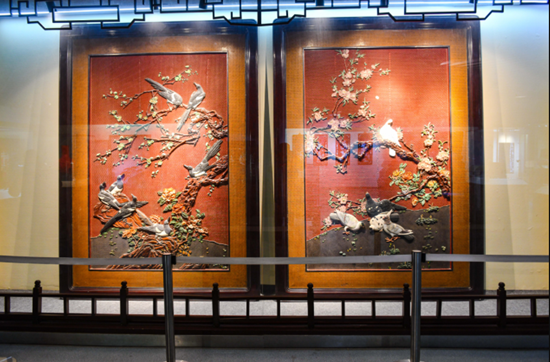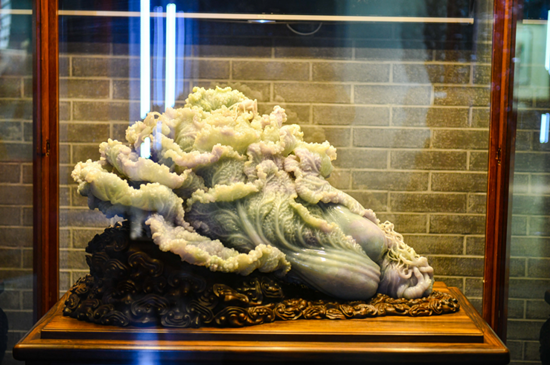
A pair of carved lacquer screens in the Yangzhou Arts and Crafts Museum in East China's Jiangsu province. [Photo/WeChat account: yzs_lyj]
Here are some of the most important artifacts in the Yangzhou Arts and Crafts Museum in East China's Jiangsu province.
One of the most-treasured pieces here is a pair of carved lacquer screens, which were crafted in 1959 to commemorate the 10th anniversary of the founding of the People's Republic of China.
The handicraft works had been on display at the Great Hall of the People in Beijing for nearly 20 years.
The carved lacquer crafts originated in the Tang Dynasty (618-907) and were developed into carved lacquer with jade inlay in the Ming and Qing Dynasties (1368-1912).
The craftsmen chose precious materials such as jade, agate and coral to carve a variety of designs before embedding them onto the carved lacquer crafts.
A hanging screen of the Nanjing Yangtze River Bridge, which was made in 1970 to mark the operation of the bridge, is another notable artifact in the museum's collection.
A jade cabbage craftwork, which weighs 150 kilograms, is also on display in the museum. The craftwork won the special prize at the 5th China Arts and Crafts Expo in 2004 and was displayed at the 2010 Shanghai Expo.
Other precious artworks displayed at the museum include creations of lacquer, jade, paper cutting, and embroidery.

A jade cabbage in the Yangzhou Arts and Crafts Museum in East China's Jiangsu province. [Photo/WeChat account: yzs_lyj]